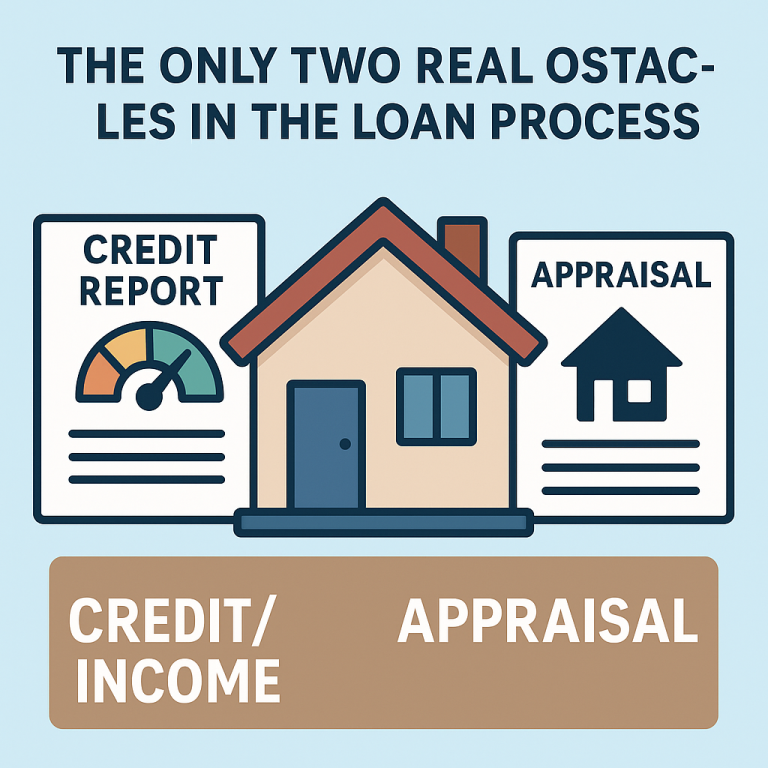When shopping for a home loan, most buyers immediately think of the 30-year fixed mortgage. But there’s another option that often gets overlooked: the adjustable rate mortgage (ARM). An ARM can sometimes save you money—especially if you plan to move or refinance within a few years—but it also comes with its own set of risks. Understanding how these loans work, and when they make sense, can help you make a confident choice for your financial future.
How an Adjustable Rate Mortgage Works
Unlike a fixed-rate mortgage, an ARM begins with a fixed interest rate for a set period of time—commonly three, five, seven, or ten years. After that initial fixed period, the interest rate can adjust periodically based on a benchmark index plus a margin established by the lender. For example, a 5/1 ARM offers a fixed rate for the first five years and then adjusts once each year after that. Each adjustment is tied to a specific index, such as the Secured Overnight Financing Rate (SOFR) or another market rate, plus the lender’s margin. To prevent runaway increases, ARMs include “caps,” which limit how much the interest rate can rise per adjustment and over the life of the loan.
Potential Advantages of an ARM
The biggest draw of an ARM is the lower initial rate compared to a comparable fixed-rate mortgage. This introductory rate can make a significant difference in your monthly payment during the early years of the loan. Lower payments free up cash for other financial goals—whether that’s building an emergency fund, paying down higher-interest debt, or making home improvements.
- Lower initial rate: Your starting rate is typically lower than a 30-year fixed rate, which can mean hundreds of dollars in savings each month at the outset.
- Short-term savings: If you plan to sell or refinance before the initial fixed period ends, you could reap the benefits of the lower rate without ever facing a higher payment.
- Flexibility: ARMs can be attractive if you expect life changes—such as a job relocation or upgrading to a larger home—in the next few years.
- Potential to pay down principal faster: Some borrowers use the lower initial payment to apply extra money toward the principal, which can shorten the loan term and reduce total interest paid.
Risks and Considerations
Despite the initial savings, ARMs are not without risk. After the fixed period, your interest rate can adjust upward—sometimes significantly—leading to higher monthly payments. Even with caps in place, those increases can strain your budget if market rates rise sharply.
- Rate adjustments: Future interest rates are unpredictable. If rates climb, your monthly payment could increase beyond what you originally planned for.
- Refinance uncertainty: Many ARM borrowers intend to refinance before the first adjustment, but refinancing isn’t guaranteed. Market conditions, home values, or changes in your personal finances could make refinancing difficult or more expensive.
- Budget challenges: The possibility of rising payments can complicate long-term financial planning, especially for families on a fixed income.
When an ARM Might Make Sense
An adjustable rate mortgage can be a smart choice in specific situations:
- You expect to move or sell the home before the end of the initial fixed period.
- Your income is likely to increase, giving you more flexibility to handle higher payments later.
- You want to take advantage of lower initial payments to direct extra funds toward investments or debt reduction.
- You’re comfortable monitoring interest rate trends and have a backup plan if rates rise.
For borrowers exploring loan types, an ARM can be an effective way to reduce early payments while maintaining flexibility for future moves or refinances.
Alternatives to ARMs
If you value payment stability, a traditional fixed-rate mortgage offers the security of a consistent rate for the life of the loan. Fixed-rate loans can be especially appealing when you plan to stay in the home long term or want to avoid the uncertainty of future rate changes. They allow for easier budgeting and protect you from the risk of rising rates.
Bottom Line
An adjustable rate mortgage can be a powerful tool when used strategically, offering lower initial payments and flexibility for homeowners with short-term plans. However, it carries the risk of rising rates and higher payments if you remain in the property beyond the fixed period. Carefully evaluate your time horizon, risk tolerance, and long-term financial goals before deciding whether an ARM is right for you.
Looking for a mortgage? Get a complimentary rate quote now!
Share:
RELATED MORTGAGE ADVICE FROM SCOTT SHELDON
When to Rent Instead of Buy: Key Situations Where Renting Makes More Sense
Buying a home is often described as the ultimate step toward financial independence, but it…
Does to make sense to cash refinance to consolidate debt?
Rising credit card balances and high-interest personal loans can put a strain on your monthly…
View More from The Mortgage Files:
begin your mortgage journey with sonoma county mortgages
Let us make your mortgage experience easy. Trust our expertise to get you your best mortgage rate. Click below to start turning your home dreams into reality today!



